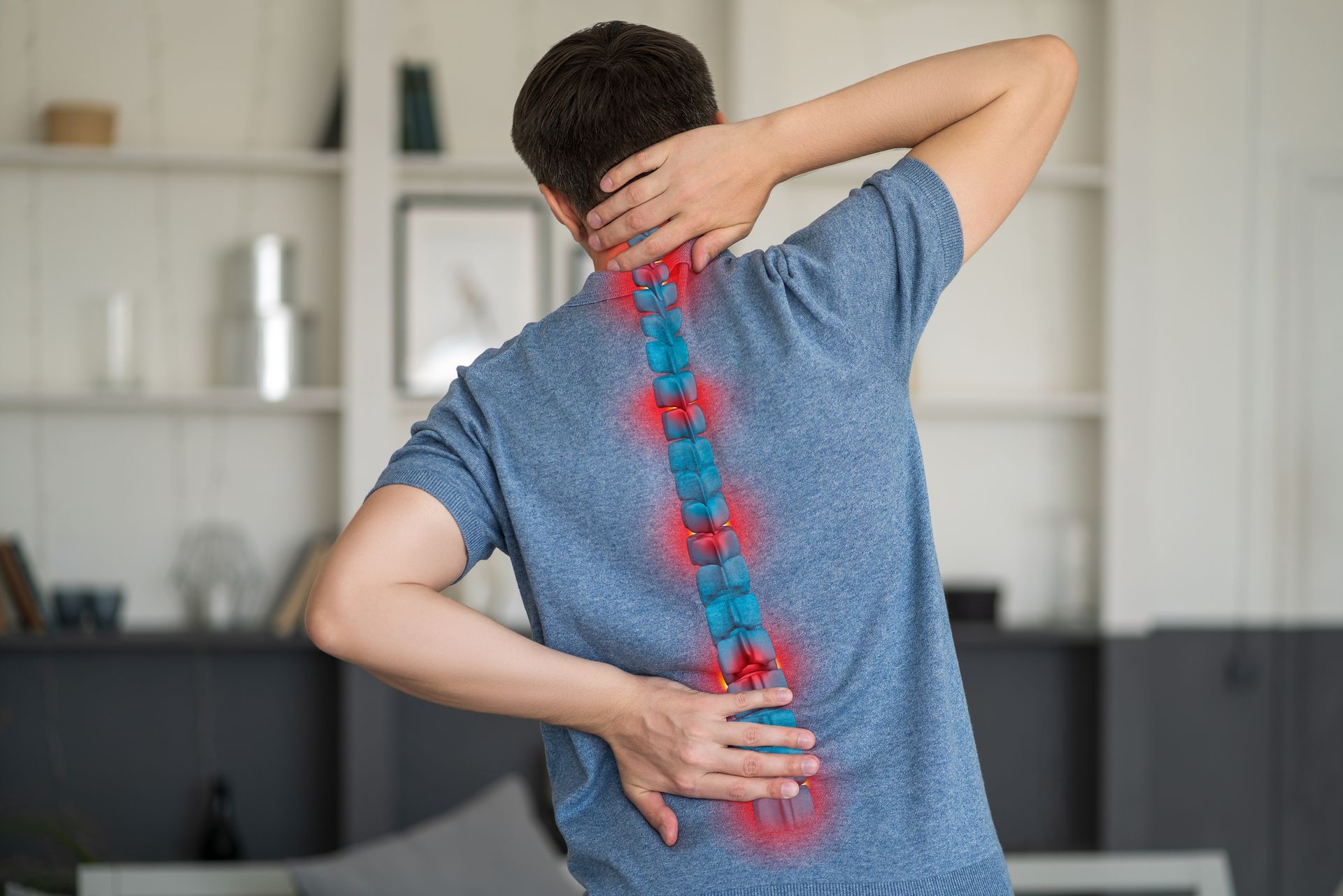Various Injections to Manage Pain
Injection Treatments
Atlanto-axial Joint Block
The atlanto-axial joint is between the cervical spine's first and second vertebrae. Injections into the atlanto-axial joint may treat pain at the back of the head.
Atlanto-occipital Joint Block
The atlanto-occipital joint is a joint between the base of the skull and the first vertebrae of the cervical spine. Injections into the atlanto-occipital joint may treat pain at the back of the head.
Epidural Neurolysis
A specially designed epidural needle is placed under X-ray control, and through it, a catheter is directed to the site of pain and scarring. This catheter injects local anesthetics, steroids, and concentrated saline to shrink scar tissue and decrease pain.
Ozone Injections
Ozone or prolozone injections are liquid solutions of procaine, minerals, vitamins, and homeopathic remedies. Areas injected with ozone can improve bodily functions like oxygen utilization and circulation and aid injured cell membranes.
Platelet-Rich Plasma (PRP) Injections
We can treat your pain with PRP, which uses your blood to promote healing. Your doctor draws a small sample of your blood containing platelets that promote cell growth. Your blood is then processed in a centrifuge machine to extract the PRP. The PRP is then injected into your body to stimulate healing and ultimately bring relief.
Once your body receives the PRP injection, the growth factors promote tissue repair. Improvements in your body and pain reduction should be noticed within a few weeks.
Epidural Steroid Injections
The epidural space is within the spinal canal and surrounds the spinal cord. Steroid injections into this space can help to decrease inflammation of spinal nerves. These injections are usually given in three series for a cumulative effect. They are used for problems such as herniated discs, sciatica, radiculopathy, narrowing of the spinal canal (spinal stenosis), and discogenic low back pain. They can be given in the neck (cervical spine), upper back (thoracic spine), lower back (lumbar spine), and from the level of the tailbone (caudal approach).
Facet Injections
The facet joints allow movement of the spine bones. The facet joints start near the base of the skull at the cervical region and extend to the sacrum. These joints can be a source of pain. Injections into the joints can be used to diagnose and treat this type of pain. If local anesthetic and steroid injections give only short-term relief, radiofrequency heating of the nerves supplying the joints may give more prolonged relief.
Sacroiliac Joint Injections
The sacroiliac joints are joints in the region of the low back and buttocks where the pelvis joins with the spine. If the joints become painful, they may cause pain in the low back, buttocks, abdomen, groin, or legs. Injections into the sacroiliac joints can be used to diagnose and treat this type of pain.
Selective Nerve Root Injections
These injections are performed to determine if a specific spinal nerve is the source of pain. Local anesthetic and steroids are injected very close to the nerve in question. This injection can also reduce inflammation around the nerve root, thus relieving the pain.
Epidural Steroid Injections
The epidural space surrounds the spinal cord within the spinal canal. Steroid injections in this space can help decrease inflammation of spinal nerves. These injections are usually given in three series for a cumulative effect. They are used for problems such as herniated discs, sciatica, radiculopathy, narrowing of the spinal canal (spinal stenosis), and discogenic low back pain. They can be given in the neck, upper back, lower back, and tailbone.
Neurolytic Procedures (radiofrequency lesions)
Neurolytic procedures interrupt pain signals along a nerve from a source of pain. The interruption, known as denervation, is done with a radio-frequency probe that heats the nerve.
Occipital Nerve Injections
Injury and compression of the occipital nerve within the neck muscles can cause headaches and neck pain (occipital neuralgia). Occipital nerve injections can be used to treat this pain.
Selective Nerve Root Injections
These injections are performed to determine if a specific spinal nerve is the source of pain. Local anesthetic and steroids are injected very close to the nerve in question. This injection can also reduce inflammation around the nerve root, thus relieving the pain.
Epidural Steroid Injections
The epidural space is within the spinal canal and surrounds the spinal cord. Steroid injections into this space can help to decrease inflammation of spinal nerves. These injections are usually given in three series for a cumulative effect. They are used for problems such as herniated discs, sciatica, radiculopathy, narrowing of the spinal canal (spinal stenosis), and discogenic low back pain. They can be given in the neck (cervical spine), upper back (thoracic spine), lower back (lumbar spine), and from the level of the tailbone (caudal approach).
Sphenopalantine Nerve Block
This can be a very useful treatment for certain headaches and facial pain types. This block is performed using X-ray guidance. A small amount of local anesthetic is injected through the cheek to numb the sphenopalatine ganglion. Pain relief is immediate if this is a structure involved in the pain pathway.
Stellate Ganglion Block
The sympathetic nervous system is a network of nerves throughout your body. The nerves branch from your spine. They control some body functions, such as the closing of blood vessels. A problem with these nerves can affect blood flow and cause pain. Symptoms are often felt in the hands or feet. They may hurt, burn, feel cold, or be tender to the touch. This block is performed under X-ray guidance to determine if there is damage to the sympathetic nerve chain and if it is the source of the patient's arm pain. This block may be used to diagnose the cause of pain and may also provide pain relief. A local anesthetic injection is given near the base of the neck on the affected side.
Suprascapular Nerve Block
A suprascapular nerve block with local anesthetic and steroids may be useful for treating shoulder pain.
Sympathetic Blocks, Lumbar
The sympathetic nervous system is a network of nerves throughout your body. The nerves branch from your spine. A problem with these nerves can affect blood flow and cause pain. Symptoms are often felt in the hands or feet. This block may be used to diagnose the cause of pain and to provide pain relief.
Spinal Cord Stimulation
Spinal cord stimulation uses an implanted device to deliver low levels of electrical energy directly to nerve fibers, interrupting pain signals.
Selective Nerve Root Injections
These injections are performed to determine if a specific spinal nerve is the source of pain. Local anesthetic and steroids are injected very close to the nerve in question. This injection can also reduce inflammation around the nerve root, thus relieving the pain.




























